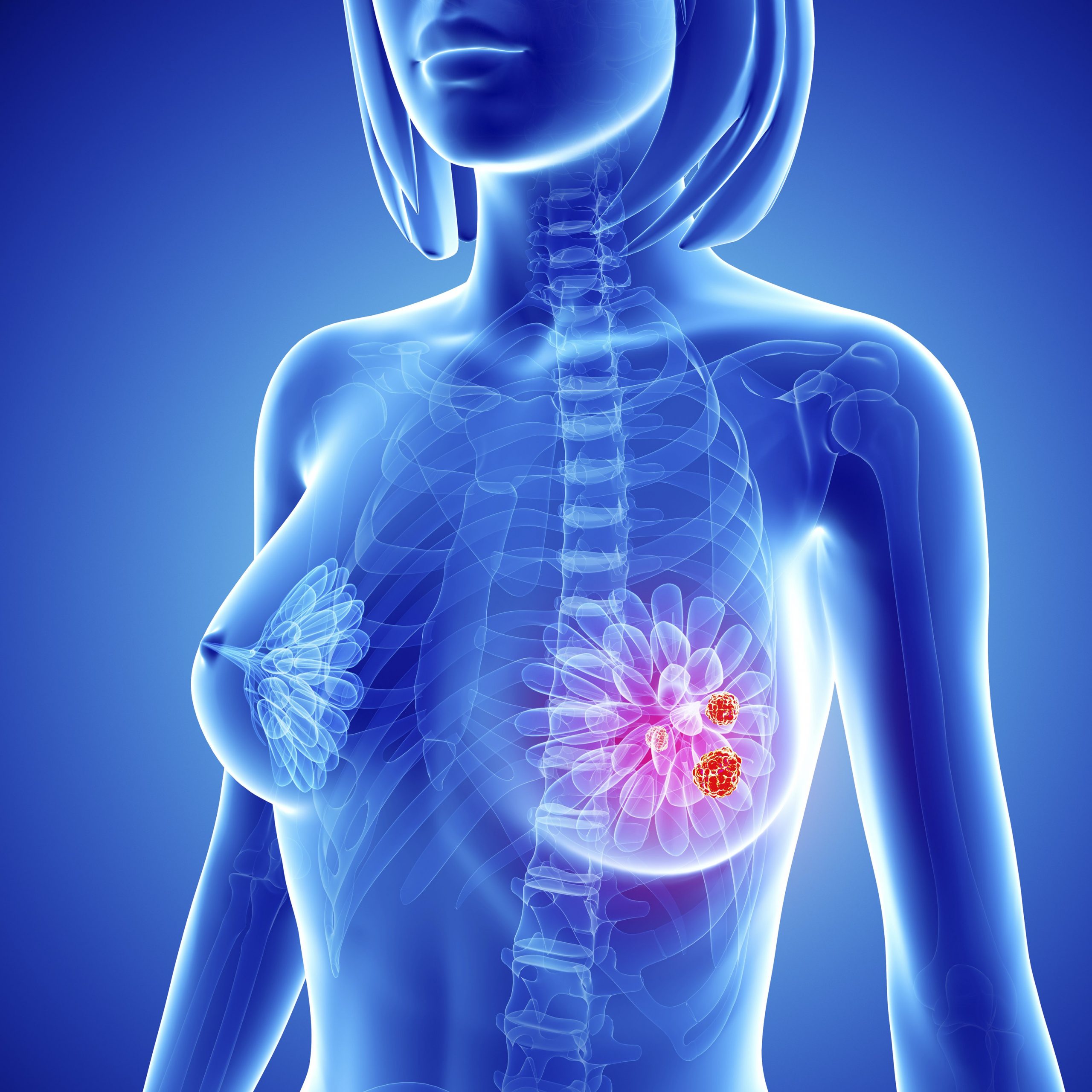Breast cancer ranks first in the prevalence of tumors in women in Russia and around the world, and is a multifactorial disease. Genetic breast cancer accounts for 10% of all causes, and most of the genetic changes occur in the BRCA1 / BRCA2 genes.
Cancer is known to be easier to prevent than to cure. Modern medicine has a deep understanding of the causes and mechanisms of tumor development, but, despite this, oncology is in second place in terms of morbidity and mortality after cardiovascular diseases. The dream of any oncologist is to identify precancerous conditions or cancer no later than stage 1 in order to ensure a complete cure of the tumor. Here a great responsibility rests on the patient – self-examination, vigilance, timely access to a doctor and regular examination.
The identification of genetic mutations responsible for the development of a tumor is a serious step in the development of preventive medicine. Everyone knows the story of Angelina Jolie, who learned through genetic research that she is a carrier of the mutant BRCA gene and underwent preventive surgery to remove the mammary glands. Her situation is individual, and does not mean that organ removal is the only solution to the problem. In Russia, such prophylactic operations are not permitted. The famous actress managed to draw the attention of women around the world to the problems of hereditary cancer. It is easy to be examined for the carriage of unfavorable gene variants – it is enough to donate blood from a vein. Genetic research is carried out once in a lifetime and at any age (it is possible from birth) at the request of the patient himself or the child’s parents, if there is evidence that the child may be a carrier of this mutation.
What are these genes – BRCA 1 and BRCA2?
These are the main genes for breast cancer, which in English sounds like BReast CAncer gene, hence the name. They are in every cell, they are protective and provide DNA restoration as a result of adverse influences. When a mutation occurs, this important ability of the gene is lost, errors accumulate, as a result, cells with damaged DNA begin to multiply and a tumor forms.
What other cancers cause mutations in the BRCA genes?
The main feature and insidiousness of BRCA mutations is the high likelihood of developing combined breast and ovarian cancer in women. Men are also at high risk of developing breast cancer, less often prostate cancer. There is a connection with an increased incidence of cancer of the stomach, colon, pancreas, uterus (endometrium), less often melanoma.
Does detection of a mutation mean 100% development of the disease?
No. The first thing to remember is that mutation detection is not a diagnosis. However, the lifetime risk of developing breast and ovarian cancer in patients with the defective gene reaches 60-90%.
Who is recommended to be examined first of all?
If there are two or more relatives of the first and second degree of kinship in the family (mom, dad, grandmother, grandfather, aunt, uncle) with an established diagnosis of breast and / or ovarian cancer.
The early age of onset of cancer in the woman herself or her relatives (up to 50 years)
The development of tumors of several localizations at the same time in a patient or relatives (primary multiple tumors)
Revealed mutations in BRCA genes in close relatives.
Any woman who wishes can also be examined.
How is BRCA-dependent breast cancer different from other cancers?
Development at a young age (40 and earlier)
Frequent combination with ovarian cancer
Often, before the development of cancer, a woman has benign breast tumors or mastopathy.
There is a risk of developing a tumor during pregnancy and lactation
If cancer is detected in one breast, the likelihood of cancer in the other gland is high after a few years (average 8)
Cases of bilateral cancer are not uncommon
The ability of cancer to “grow younger” in the next generations, that is, to develop 5-7 years earlier than that of its ancestors
More aggressive course, requiring a special approach to treatment
Features of treatment: cancer often does not respond to treatment with hormones, high efficiency during treatment before surgery.
Thus, “armed means protected.” Detection of the mutation allows you to develop a plan for a timely examination.
The answer was “mutation detected”. What to do next?
Self-examination of the mammary glands once a month from the age of 18
Consultations with a gynecologist and mammologist – once every 6-12 months from the age of 18
Mammography of the mammary glands (over the age of 40) or MRI of the mammary glands (from 25 years) – once every 12 months, in addition, ultrasound computed tomography (UST) of the mammary glands, if necessary
Transvaginal ultrasound of the pelvic organs – once every 6 months from the age of 30
Laboratory determination of CA-15-3 and CA-125 once every 6 months from the age of 25. Important: increased values of tumor markers cannot be the reason for the diagnosis, but serve as a reason for additional examination of the patient. The specificity of tumor markers is limited by their possible increase in a number of benign and non-tumor diseases.
What else should you pay attention to?
Eliminate additional risk factors: smoking, drinking alcohol, exposure to radiation
The formation of a tumor in other organs is not excluded. Prophylactic FGS, colonoscopy, transferrin and hemoglobin feces and other studies are necessary for timely diagnosis.
How is BRCA mutation testing done?
In venous blood by real time PCR (real-time polymerase chain reaction). This is the most modern technology. The 8 most frequent mutations in the BRCA1 https://en.wikipedia.org/wiki/BRCA1 / BRCA2 genes, which are carried by 80% of all carriers of mutations in these genes, are being investigated.
Do I need special preparation for research?
No, the study is carried out 3 hours after a small meal. You don’t need to prepare specifically.
How to understand the research result?
A genetic map is issued with a detailed description of the genes, your result in the form of a table and recommendations.
Get examined on time, cooperate with your doctor and be healthy!



